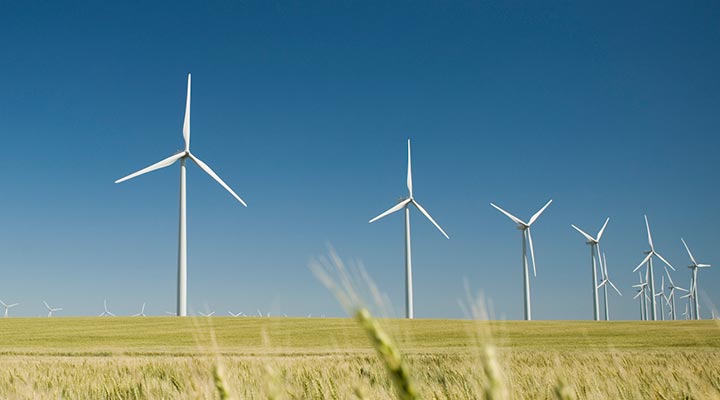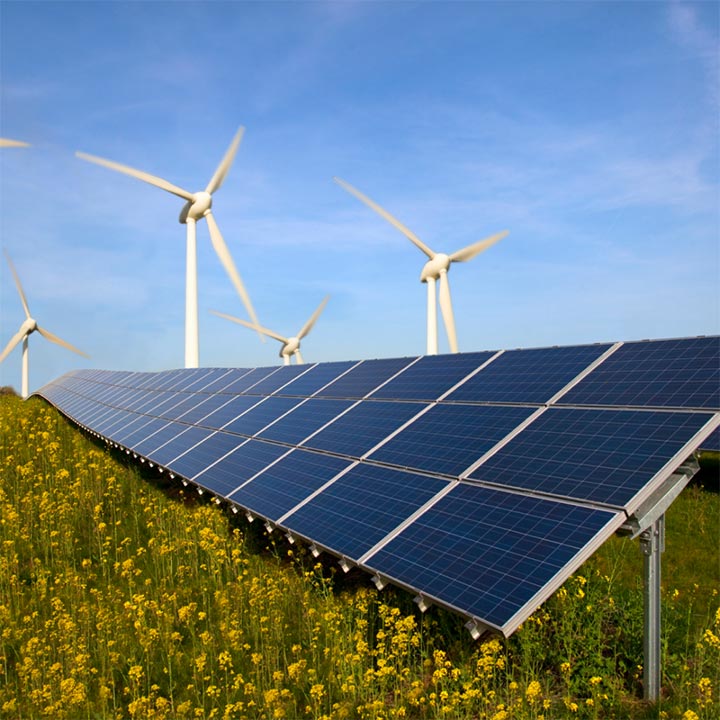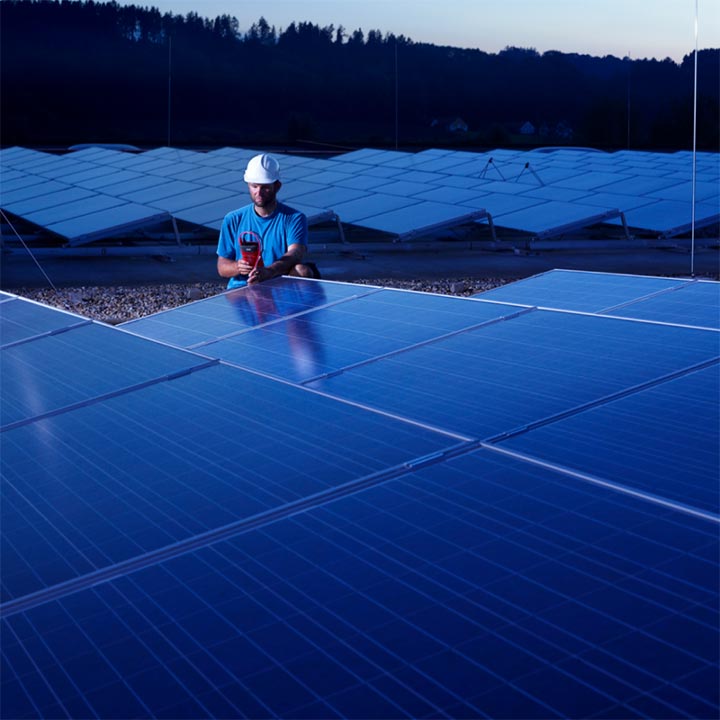
Weathering the Storm: Commodities in a Changing Climate
The Ukrainian conflict, inflation, and China’s zero-covid policy all understandably dominated the narrative about commodities markets in 2022. But these factors further enhanced the market’s sensitivity to one of the most important factors when pricing commodities: the weather.
The weather is unique in how it influences commodities as a critical driver for supply and demand. The rise of renewable energy means wind, solar and precipitation play an increasingly important role. We’ve also seen more extreme weather events impacting the supply of critical commodities, from Agri-commodities like grain, soybeans, cocoa, and coffee to the global shortage of semiconductor chips since 2021 due in part to droughts in Taiwan and a lack of water supply to factories there.
Commodities trading and risk management are as important as ever, and weather analysis is vital to how we do business. Moreover, its importance will only grow as the world deals with a changing climate and the transition to net zero.
The Intergovernmental Panel on Climate Change says the world is expected to see “a significant rise in the frequency, duration, and intensity of extreme weather events.” This will clearly impact many of the commodities markets in which we operate, particularly energy and agriculture.
In the rest of this article, we’ll set out our insights as to why the weather and climate change will have fundamental implications for some of the critical commodities we trade. We’ll also look at how technological advances have transformed how meteorologists work and what that means for the future.

Weather and the Renewable Energy Transition
Climate change, and the resulting weather volatility, is significantly affecting the world’s energy generation potential and energy needs.
Just two examples –
- Climate change is impacting the water cycle. This means less rainfall in some places and, therefore, less hydropower. These changes introduce additional challenges to the agriculture growing season due to changes in the frequency of drought and floods.
- Warmer temperatures will increase energy demand for cooling in the summer while decreasing the demand for heating in the winter over the long term.
As we transition towards net zero, the weather will become even more vital to how we get our power. A world relying on renewable energy is a world that must manage the inherent volatility of weather.
“Time is not on our side, and our climate is changing before our eyes. We need a complete transformation of the global energy system” – Professor Petteri Taalas, Secretary-General, World Meteorological Organization
The US Energy Information Administration (EIA) projects that renewables will make up 24% of the US energy mix in 2023, up from 20% in 2021. The numbers are similar in Europe, 22% in 2020/21, but EU countries and the European Parliament are currently discussing how much of Europe’s energy mix should come from renewables by 2030. The EU Commission wants that to be an ambitious 45%.
In Asia, the transition to renewable energy is happening even more quickly. China looks on track to reach its target of 33% of electricity generation from renewables by 2025, and across the region, other big players like India, Indonesia and Vietnam are set to greatly increase their use of renewable energy.
“Renewables have an inherent storage problem”
But as important as they are to the world’s future energy supply, renewables also have an inherent storage problem. The energy industry is currently trying to respond to the challenge of what happens when the sun doesn’t shine, the wind doesn’t blow, and the rain doesn’t fall.
Battery storage is our current best solution, but we’re some way off from being able to rely on batteries to support a majority renewable energy mix globally. For example, Europe’s biggest battery storage facility was activated in Yorkshire, UK, in November 2022. The Pillswood facility can store 196MWh, but that’s only enough energy to supply approximately 300,000 UK homes for two hours. Other versions of battery storage, i.e., iron-air batteries, may be more beneficial for utilities during peak hours.
Until the storage problem is addressed, non-renewable baseload fuels will remain vital to most countries’ energy security. Nuclear, gas and coal power stations ensure the grid always meets the minimum level of power demand. But even these traditional baseload fuels aren’t without their own weather challenges.
Heatwaves in Europe in the last 2 decades have resulted in repeated shutdowns of nuclear and coal power stations, mainly due to the higher than permitted temperature of the wastewater or from associated droughts impacting river levels that prevent the resupply of coal by barge.
Severe cold weather can also impact the operational efficacy of coal power stations. Rail lines delivering the coal can be impassable, and equipment in the plants can freeze. We saw this during Christmas in North Carolina, US, when 500,000 homes faced rolling blackouts because of extreme cold affecting baseload power stations.
We also saw the clear impact of weather as a primary driver of energy prices in the collapse of the European natural gas price in recent months. Record highs in Q3 2022 had the market almost entirely focused on the supply challenges posed by the Russian invasion of Ukraine. The subsequent exceptionally mild October, November and early 2023 period, coupled with high inventory levels, saw prices fall to around 20% of their peak.
You can read more about our analysis of the natural gas markets in 2022 HERE.
The Weather Effect on Agri-Commodities
As is often the case when analysing the relationship between weather and commodities, there are two sides to consider. The mild winter may be good news for policymakers and energy consumers in Europe, but it’s bad news for farmers who face crops coming on too early and being damaged by any late winter cold snap.

The global food system is increasingly interconnected and under pressure to support growing demand. Whilst at the same time facing new and uncertain impacts from climate change.
Global crop yields are being affected by rising temperatures and extreme weather patterns. For example, the La Nina climate pattern (currently in a rare ‘triple dip’ of 3 consecutive years) has contributed to a generational drought in Argentina in the last year, severely impacting harvests of soybeans. Wheat prices reached all-time highs in April last year after spring drought in Canada and the US Plains affected production, and record-low water levels in the Mississippi River delayed grain transport to the Gulf coast.
The increasing frequency of these new weather and climate extremes suggests that this volatility and the related price volatility for commodities is here to stay. We believe that elevated prices of many commodities will be the norm, and the traders and producers that adapt and innovate will best manage this risk. That’s where expert meteorologists, who can build complex data models, provide the edge.
A Digital Revolution in Weather Forecasting
A decade ago, it was enough for weather analysts to look at the global weather models and offer their expert interpretations to analysts and traders. That’s how some of the more sophisticated trading houses operated for years; weather teams would analyse current forecasts and the available data, and those insights were passed on to the trading desks to inform a trading strategy.
Now our meteorologists at Engelhart offer those same insights but also build proprietary models that paint a much richer picture of how weather and the changing climate will potentially impact our key markets. They’re increasingly as skilled in coding and quantitative analysis as they are in weather forecasting, given the terabytes of data they’re dealing with daily.

That data includes information from surface weather observations and numerical weather prediction forecasts from across the weather enterprise. They’re also using machine learning and AI to process real-time and historical weather data to spot trends and make data-driven predictions which greatly enhance how we can trade commodities.
With the advances in computing and the quantitative expertise of our meteorologists, we can analyse large historic weather datasets and better predict future weather patterns and the risks associated with those forecasts.
But despite advancements in technology and modelling, the atmosphere remains unpredictable, with accuracy decreasing as predictions extend further into the future. Thus, even the most advanced models can only estimate the probability of specific weather outcomes and their effects.
One thing that is certain is that global weather forecasting improves society’s understanding of the implications of extreme weather and climate change. This has important implications for the future, helping inform investment decisions and motivating policymakers to improve the security and integrity of supply for critical commodities.
In recent years, the World Meteorological Organization (WMO) has encouraged weather analysts to focus less on “what the weather will be” and more on “what the weather will do.” i.e., not just a prediction of the weather itself but a prediction of what impact the weather will have.
We see that as an important evolution as we transition to this new world of net-zero energy and increasingly volatile weather events. Access to reliable weather, water and climate information will be increasingly vital to managing risk and ensuring we meet rising global commodity demand.